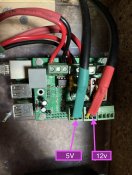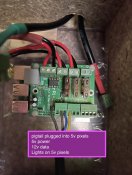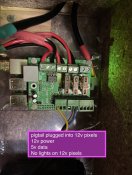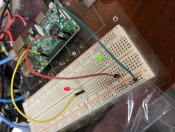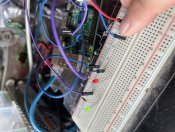Leevi Graham
New elf
- Joined
- Mar 12, 2019
- Messages
- 8
I had a fully working display which consisted of a mix of 5v strip and 12v pixels. The display was powered by a rasberry pi 3 and a rPI-28 controller.
A week ago I decided to update FPP from v3.3 to the latest which included a full os reinstall.
When I plugged everything back in the 5v lights stopped working.
Thinking it was a software issue I reconfigured everything and tried to run the display testing in FPP. The 12v strings worked as expected the 5v did not.
I then thought the first 5v pixel might have blown so I rewired the power, negative and data to the second pixel… nothing.
I then ran another cable directly from the PiHat output to another strip of pixels… nothing.
The only thing I could think of is that I accidentally plugged one of the 12v power injector pigtails into a 5v which could have somehow made its way back into the piHat and damaged the piHat / Pi?
So I purchased a new rPI-28D+, rewired everything again… double and triple checked… nothing… so it's not the PiHat… could still be the pi tho.
I've checked there is voltage in the 5v strip and it's 5v so power is getting to the strip… just no signal.
Any ideas would be appreciated…
I've attached some screenshots of my FPP config and of the wiring of the PI.
A week ago I decided to update FPP from v3.3 to the latest which included a full os reinstall.
When I plugged everything back in the 5v lights stopped working.
Thinking it was a software issue I reconfigured everything and tried to run the display testing in FPP. The 12v strings worked as expected the 5v did not.
I then thought the first 5v pixel might have blown so I rewired the power, negative and data to the second pixel… nothing.
I then ran another cable directly from the PiHat output to another strip of pixels… nothing.
The only thing I could think of is that I accidentally plugged one of the 12v power injector pigtails into a 5v which could have somehow made its way back into the piHat and damaged the piHat / Pi?
So I purchased a new rPI-28D+, rewired everything again… double and triple checked… nothing… so it's not the PiHat… could still be the pi tho.
I've checked there is voltage in the 5v strip and it's 5v so power is getting to the strip… just no signal.
Any ideas would be appreciated…
I've attached some screenshots of my FPP config and of the wiring of the PI.




